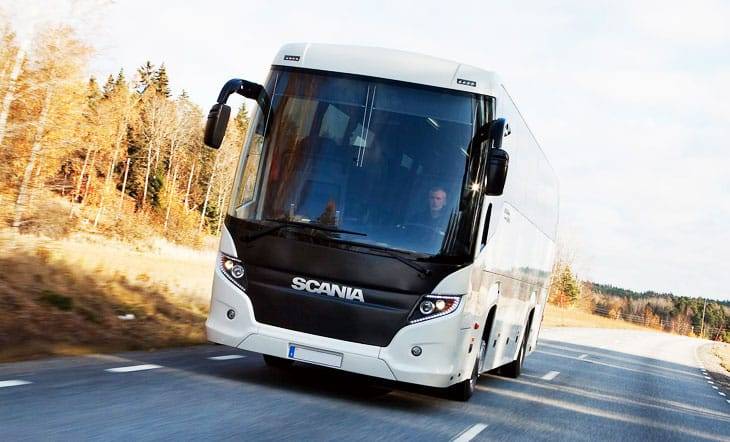Commercial tyres which include truck tyres, bus tyres play a crucial role in the transportation industry, providing reliable and efficient performance for various commercial vehicles. Commercial tyres are optimized for fuel efficiency, reduce rolling resistance, and improve overall drive safety and comfort. The article presents 8 maintenance tips for commercial tyres.
The bus and truck tyres are specialized tyres, designed to withstand heavy loads, extended mileage, and challenging road conditions. They feature robust construction, durable tread compounds, and reinforced sidewalls to ensure enhanced traction, stability, and longevity. They are meticulously designed and rigorously tested to meet specific requirements, offering superior grip, handling, and braking capabilities. With their ability to withstand the demands of commercial applications, these tyres contribute significantly to the smooth and reliable operation of trucks, buses, vans, and other commercial vehicles.To economise on cost of operation Commercial tyres have different groove patterns for different purposes.
- The vertical pattern has small resistance and high speed, and is suitable for hard pavements such as cement and asphalt.
- The horizontal pattern has strong grip, good climbing performance, and can adapt to the current features of pavements in China.
- The mixed pattern combines the features of horizontal and vertical patterns.
- Cross-country pattern is suitable for roads with no pavements or only poor conditions.
- When the tread pattern is worn to the wear mark, it should not be used any longer.
Tips for Maintaining Commercial Tyres
1. Regular Tyre Inspections
Conduct periodic and frequent visual inspections of the tyres to check for signs of abnormal and uneven tyre wear, damage, or embedded sharp objects promptly.
2. Correct Tyre Presure
Important to maintain the recommended tyre pressure as specified by the tyre manufacturer. Improper inflation can lead to uneven wear, reduced fuel efficiency, and compromised steering and handling.
-
To ensure safety, use protective gear when inflating the tyre.
- New tyres should be inflated as per vehicle specification
- Tighten the nut of the valve pad to prevent air leakage.
- The air to be filled should be dry and free of moisture and oil.
- The barometer should be accurate and should be periodically inspected.
- After the air under standard pressure is inflated, waif for 15 min before adjusting the air pressure to prevent drops in air temperature and air pressure of the original compressed air.
- Check the inflating valve for any deformation or leakage.
Pro Tip :
In case of long-distance and high-speed driving or summer driving, please check the air pressure frequently and increase the number of stops appropriately. If the air pressure is required to be supplemented, the tyre should be cooled first before inflation. If the tyre is hot or the internal pressure is high, please stop the vehicle to dissipate the heat. Do not deflate to reduce the pressure or cool the tyre with cold water.
3. No Tyre Overloading
Overloading can cause excessive heat build-up, leading to tyre failure.
- The tyre load should satisfy the load specified in the current national standards, and overload should be strictly prohibited.
- Cargo loads should be distributed evenly to avoid unbalanced loads.
- Serious overload would result in abnormal wear of tyre tread, empty shoulders, delamination, bead toe blasting, etc.
- High-level and heavy-load tyres are not suitable for high-speed driving.
- The load of reinforced tyre may be appropriately increased to design standards.
- Twin Tire Management
4. Tyre Rotation and Balancing
The tyres have to be rotated regularly as per manufacturer guidelines to ensure even wear across all positions. The tyres need balancing to distribute weight evenly, reducing vibration and extending tyre life.
- Truck tyres and off-the-road tyres are to be maintained with Level 1 maintenance, the Level 1 maintenance should be made. If necessary (such as severe unilateral wear), a position interchanging should be performed to keep the wear of the tread pattern uniformly; if the tyre is to be maintained with the Level II maintenance of the vehicle, Level II maintenance of the tyre should be conducted. Problems found in the maintenance, if any, should be recorded and disposed of in a timely manner.
5. Tyre Speed Limits
Observe speed limits and avoid excessive speeding. Going over the speed rating generates additional heat and increases the risk of tyre failure.
6. Wheel Alignment
Proper wheel alignment is essential for even tyre wear. Improper wheel alignment can lead to quicker wear of the tryes and also affect the steering, safety and driving comfort.
7. Monitor Tyre Tread Depth
Periodically monitor the tread depth regularly. Replace the tyres when they reach the minimum legal tread depth limit. Reduced and inadequate tread depth compromises traction and increases the risk of hydroplaning.
8. Proper Tyre Storage
Store spare commercial tyres in a clean, dry, and cool area away from direct sunlight, heat. Avoid putting heavy objects on top of them to prevent deformation.
By following these maintenance practices, you can maximize the lifespan, performance, and safety of your commercial tyres, ultimately reducing downtime and increasing the efficiency of your commercial vehicle fleet.




